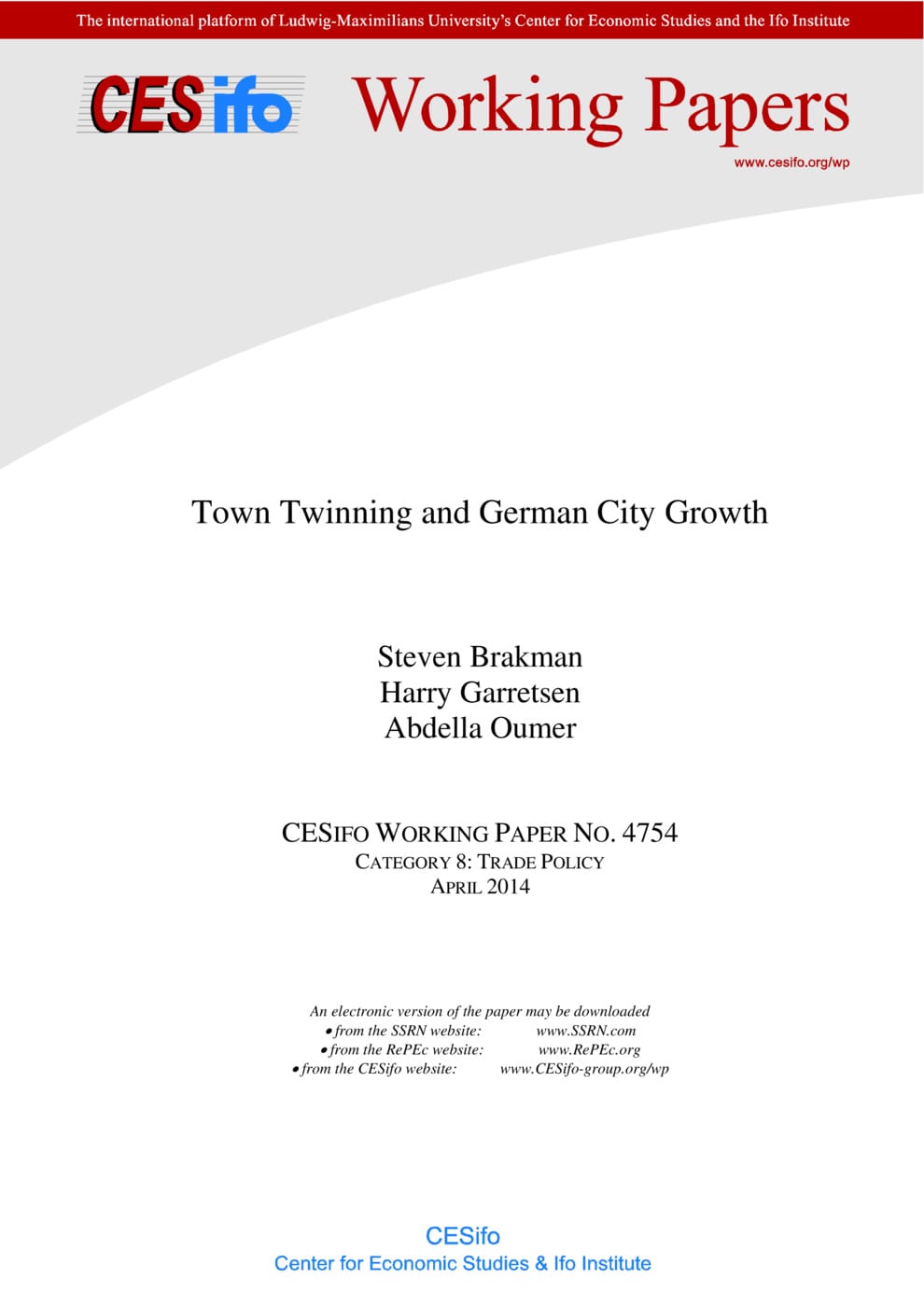Town Twinning and German City Growth
CESifo, Munich, 2014
CESifo Working Paper No. 4754

After World War II, town twinning became popular, notably in Germany. This was mainly a reaction to the war experience, and it was aimed at creating renewed international understanding and co-operation between German cities and cities in other countries. The contacts created by town twinning also resulted in increased international access of the cities involved. This potentially stimulates growth in these cities compared to cities that do not have (as many) twinning partners. In this paper we investigate the effects of town twinning on population growth in German counties and municipalities. Our results show that German counties and municipalities that engage in town twinning often have had a significantly higher population growth compared to German cities that do not have twinning partners. Especially the number or intensity of twinning relations as well as town twinning with French cities, and with neighboring countries more generally, turn out to have a positive effect on city growth. We also find that the positive population growth effects of town twinning are confined to the larger German cities.
Trade Policy
Empirical and Theoretical Methods